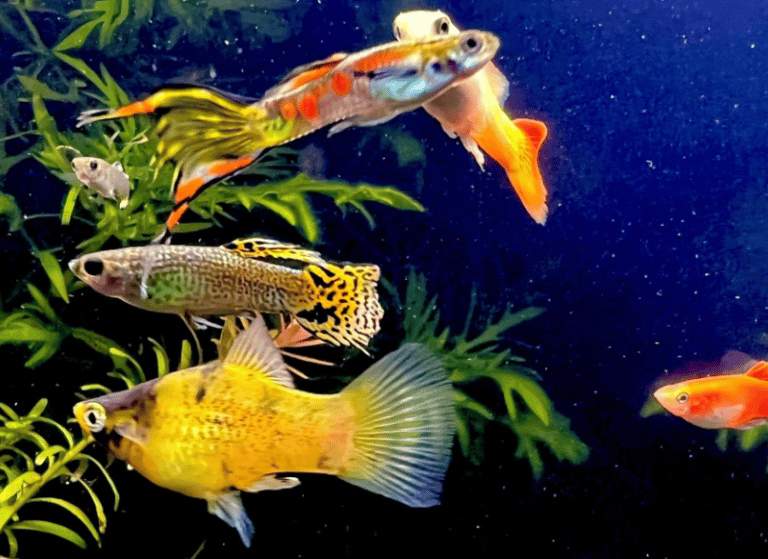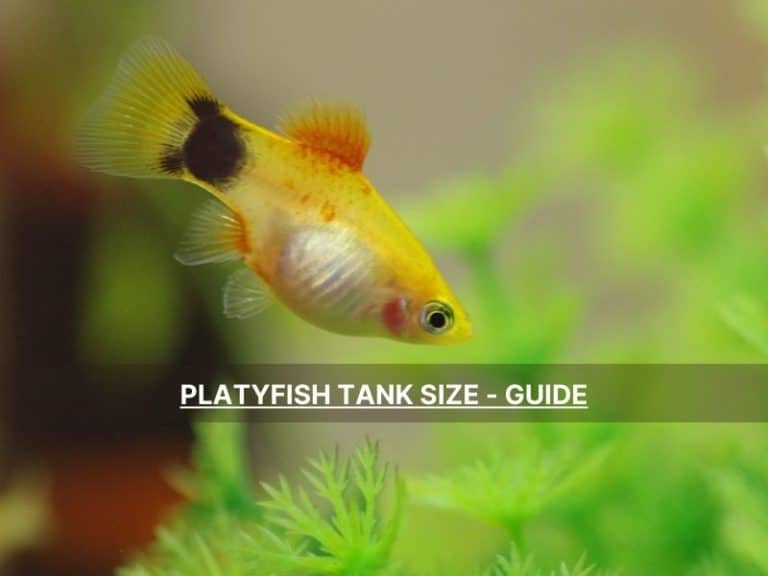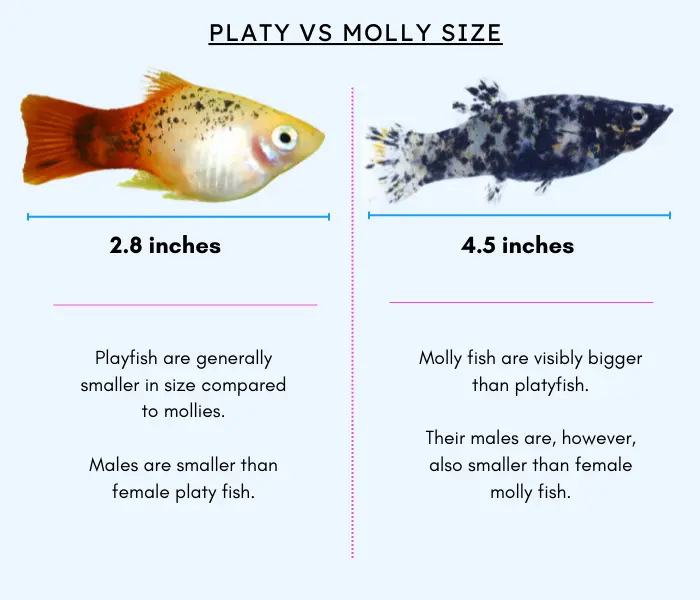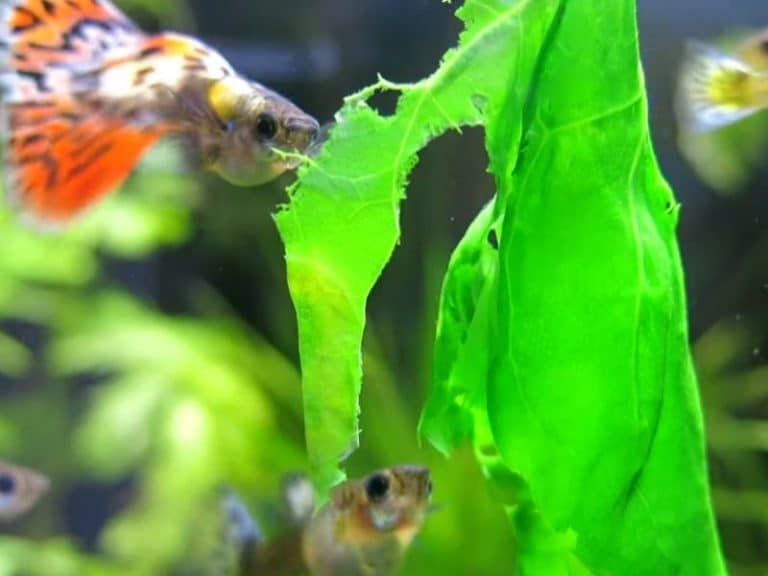Angelfish are large tropical fish that can grow up to 6 inches, about two to three times the size of guppies. These fish are omnivorous and eat algae, brine shrimp, and larvae. In their spawning season, they can be particularly aggressive to smaller fish.
But, can angelfish and guppies live together?
Angelfish and guppies have different temperaments and should not be kept together. Angelfish will bully adult guppies, stress them, and eat their fry. However, you can attempt to keep guppies and angelfish in a pond (not aquarium) where angelfish will help control the population of guppy fish.
If you have to keep them in an aquarium, ensure it is a large fish tank with many plants and hiding places to reduce aggression.
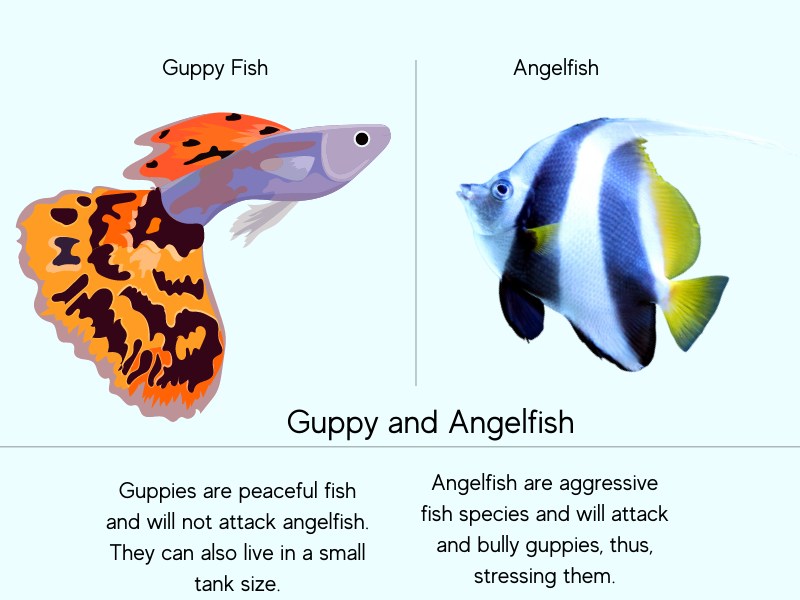
I’ve explained in detail why angelfish and guppies are bad tankmates and what you should do to keep them in the same tank.
Will angelfish kill guppies?
Angelfish are so aggressive that they will attack and kill guppies if they live in the same tank. The attacks intensify when the angelfish lay eggs.
Your guppies will be stressed due to the bullying and can end up dead.
Angelfish will most likely eat guppy fry in the same tank. I’d highly recommend only keeping the two fish species together if you want to control the guppy population in your fish tank or pond. However, ensure that the tank is large enough to accommodate both angelfish and guppy fish.
Here are some tips for putting angelfish and guppies together:
Use a 55-gallon tank or larger
You should keep angelfish in pairs, and two angelfish need at least 30 gallons of water. Therefore, the minimum tank size for keeping angelfish and guppies is 55 gallons. It gives the fish adequate space to swim and make territories without aggression.
Add many plants and hiding places in the tank
When arranging the substrate, provide hiding spaces big enough to let the guppies in and keep the angelfish out.
Grow plants such as willow moss and flame moss. They will help curb aggression and allow the fish to live harmoniously.
Use a tank divider
A tank divider is practical in large fish tanks. You can get tank dividers of various tank sizes from Amazon. It ensures your angelfish and guppies are not in contact.
Why guppies and angelfish are bad tank mates
Here are some reasons why angelfish and guppies are bad tank mates:
1. Angelfish are bigger than guppies
Angelfish can grow up to six inches long, while guppies grow to only two inches. The size difference between the two fish species is the leading cause of bullying in the aquarium.
Coupled with a small tank size, the angelfish can bully your guppies to death.
Keep in mind that the minimum tank size for guppies is 5 gallons while that for angelfish is 20 gallons making the two fish easily incompatible.
2. Angelfish eat guppy fry
Angelfish are territorial and aggressive. They will peck and nip guppy fins if you keep them together.
Guppies reproduce rapidly, and their fry are around 0.25 inches. The six-inch angelfish will not hesitate to eat the tiny guppy fry.
It is probably a good idea to move pregnant guppies into another tank to prevent their fry from being eaten as soon as they are born.
3. Guppies are peaceful while angelfish are aggressive
Guppies do not bother other fish in the aquarium. They are usually peaceful and calm, unlike the territorial and aggressive angelfish.
In addition to their small size, guppies are vulnerable to bullying and stress from angelfish.
Like most fish, angelfish are particularly more aggressive when spawning. Even in a larger fish tank, angelfish will not want to see guppies near them.
This makes the two fish incompatible and bad tank mates.
5. Male angelfish are territorial
Two angelfish need about 30 gallons of water to stay healthy and happy. They occupy their territories far away from each other.
Any fish that comes to their territory is an enemy, which can stress your guppies.
List of fish that can live with angelfish
Although angelfish and guppies are incompatible tankmates, several fish species will coexist peacefully with the angelfish. However, the new tank mates should be the same size as the angelfish, be bottom-dwellers, and match the aggression of the angelfish.
Here are some fish that can live peacefully with angelfish in your aquarium:
| Fish | Size in inches | Temperament |
| Corydoras catfish | 1.0 – 4.0 | Non-aggressive |
| Dwarf gourami | 3.5 | Partially aggressive |
| Bristlenose pleco | 5.0 | Aggressive and territorial |
| Rummy nose tetra | 2.0 – 2.5 | Peaceful |
| Head and tail light tetra | 2.0 | Peaceful |
| Zebra danios | 1.5 – 2.5 | Aggressive |
| Common molly | 4.0 – 4.5 | Mostly peaceful |
| Suckermouth catfish | 20 | Aggressive |
| Platy fish | 2.8 | Peaceful and non-violent |
| Kuhli loach | 3.0 – 4.0 | Non-aggressive |
| Ram cichlid | 2.5 | Non-aggressive |
| Discus fish | 4.8 – 6-0 | Calm but aggressive to one another |
| Siamese algae eater fish | 6.0 | Peaceful |
| Swordtails | 5.5 – 6.3 | Harmonious |
| Keyhole cichlid | 4.9 | Aggressive only after breeding |
| Rainbow kribs | 3.0 – 4.0 | Aggressive to protect their fry |
| Lemon tetra | 2.0 | Mildly aggressive |
| Neon tetra | 1.5 | Non-aggressive |
| Cardinal tetra | 1.25 | Aggressive during mating and feeding |
| Harlequin rasbora | 2.0 | Non-aggressive |
| Zebrafish | 1.6 – 2.0 | Aggressive |
| Siamese algae eater | 6.0 | Peaceful |
| Rosy tetra | 1.6 – 2.5 | Peaceful |
Bad tank mates for angelfish
Not all fish are compatible with angelfish. Some fishes are territorial and aggressive and will either attack or be attacked by the angelfish.
Here are some terrible tank mates for angelfish:
- Goldfish: They grow up to 6 inches in the aquarium. Although goldfish are beautiful and nearly the same size as angelfish, avoid keeping them together. They thrive in different environments, and one of them may not survive your water conditions.
- Betta fish: Betta fish and angelfish are bad tank mates because they will fight each other to defend their territory and space.
- Barbs: Tiger barbs are fin nippers. Angelfish will be more aggressive towards the barbs and might even confuse the barbs for food.
References
- The Ohio State University. (nd). Fish Basics. Pets 4 Life.

